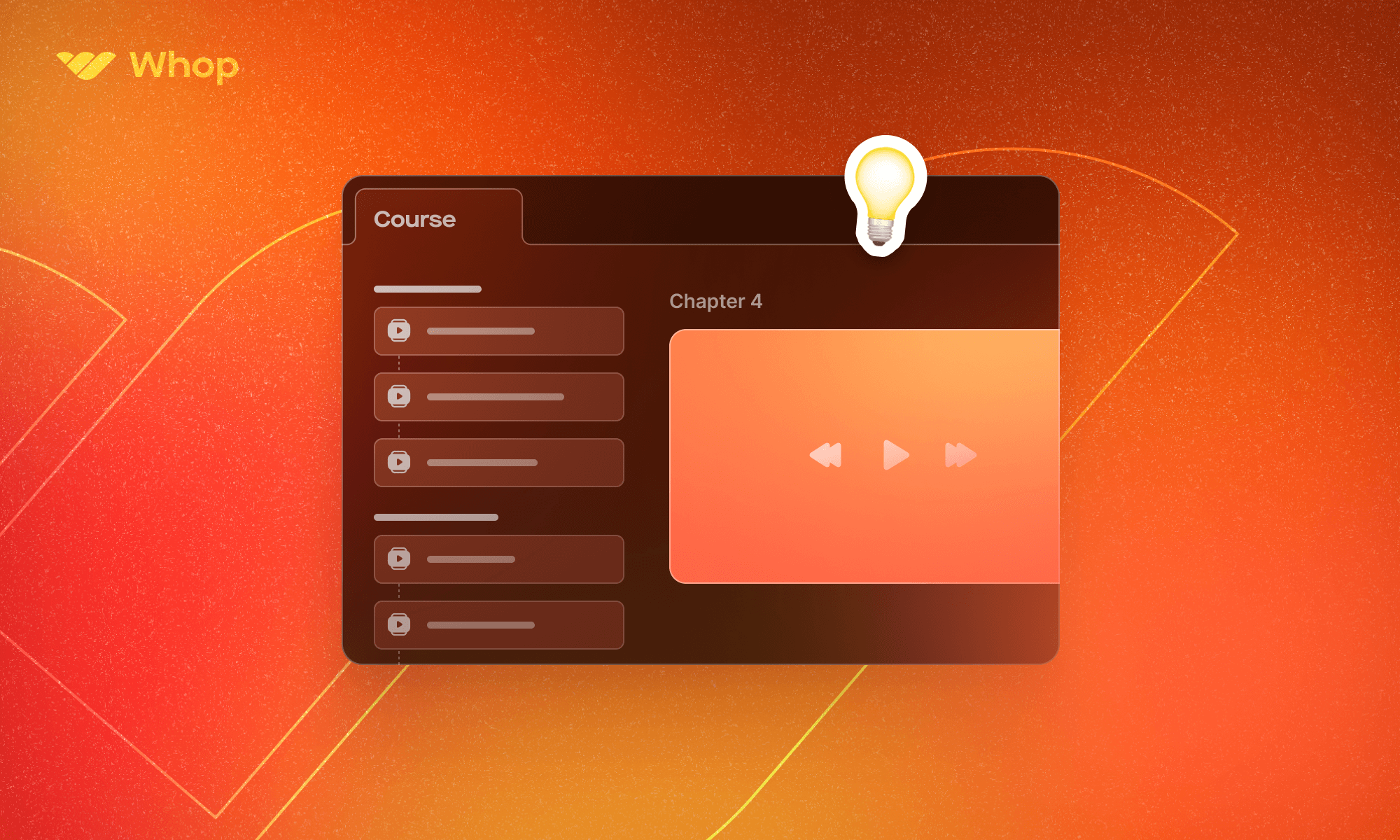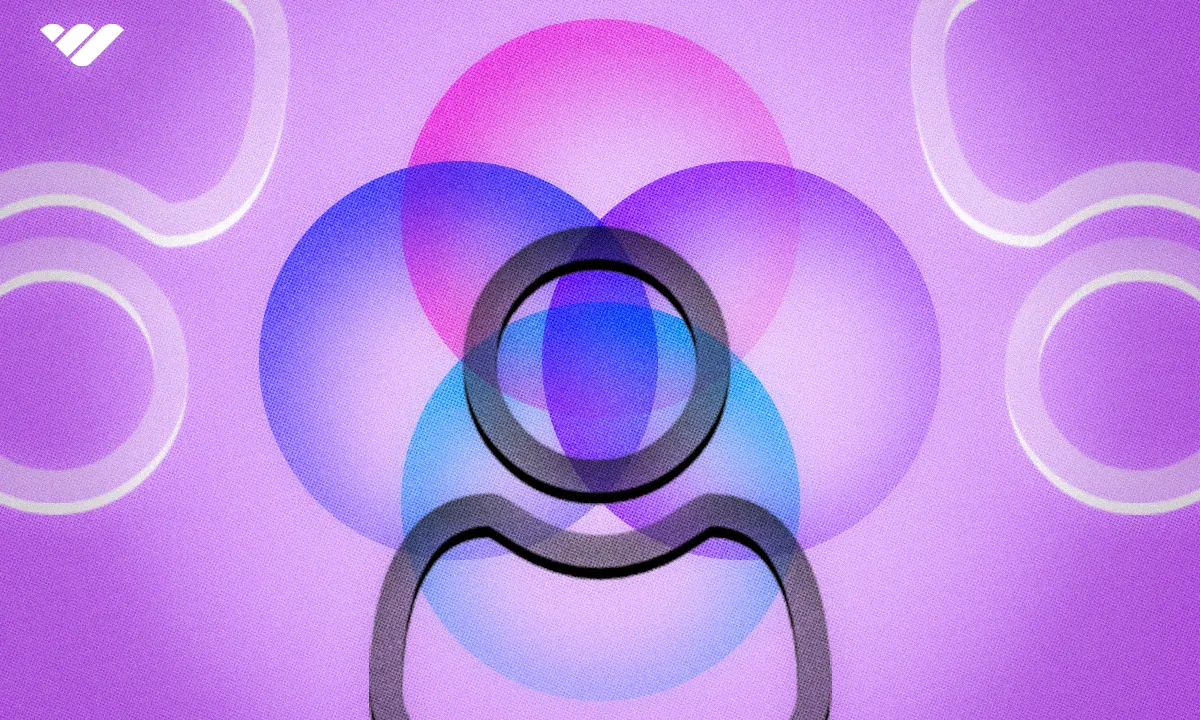To create an online community for your course: sign up to Whop, create your community hub, add pricing tiers and content, and start inviting members. This guide walks you through each step in detail.
Key takeaways
- Course communities keep satisfied customers engaged and ready to buy your future products.
- Tiered membership with exclusive premium content creates recurring subscription revenue and boosts retention.
- Daily engagement through questions, events, and member interaction maintains community energy and reduces churn.
Creating an online community for your course takes several steps: choose a platform to set up a community in (like Whop), set up your community hub, add content to your hub and create pricing tiers (so your members can sign up), and start inviting your members to it.
With Statista projecting over 8.5% growth to a total volume of $279 billion in 2029, online courses and e-learning are very much in the mainstream as far as business models go.
There are a variety of platforms on which you can host and share your courses, and multiple revenue models to choose from.
Let’s look at how, and then show you how to create your own online community!
Create an online community in 7 steps
Now that you know why you should be thinking about launching your online community sooner rather than later, let’s get into exactly how you can put the plan into action.
1. Define your goals
First of all, it’s important to take stock of your situation and be honest with yourself about where your course is. Do you have a significant amount of satisfied customers, or some kind of community already established somewhere? Or is your course relatively new, and still in the process of establishing itself (and you) as an influence in the space?
Your situation will probably dictate how you go about things. Having an established following means you can probably go straight out of the gate with an exclusive paid group, but a small creator may need to think in terms of a free group with some premium options to ramp monetization up slowly.
At this stage, you can figure out what’s possible given your stature in your niche and then devise an offering that works.
2. Position your brand
Building a detailed customer persona and learning about your chosen customer segments will help you refine your brand positioning strategy, and allow you to “speak” directly to the heart of your customer.
The best creators really get their audience, and this connection can serve as a great basis for your community.
3. Choose your platforms
There are many online community platforms to choose, but the best one is Whop.
With Whop, you can incorporate functions like chat, forums, video calls and even host courses directly from your Whop.
As a result, plenty of creators are skipping traditional platforms like Discord and Telegram and coming directly to Whop as a one-stop shop for their communities. Rather than having a community platform and monetizing it with another service, you can do it all in one place with Whop.
Which services you use to market your community also have a big role to play here, and it might come down to what form of marketing you yourself prefer. TikTok is great for short video content but YouTube might be the way to go if you want to release free samples of your courses.
Then there’s Instagram which is all about imagery, Mastodon and Twitter for brief text, and even Facebook can be of use for certain customer demographics.
4. Bring members in
Now that you’ve chosen which platforms to use, you can start funneling your course participants in. Just a mention of them during your courses will generally be enough, but content marketing as described via Instagram, TikTok and YouTube will also help—and they’re only the tip of the iceberg, given that you might find media like blogs even more powerful.
There's an age old saying that it's much easier to sell to somebody that you sold before than somebody new. And this is why having a community is such a great thing because these people will buy again and again and again, because they know who you are, they trust you and they trust the vision that you have.
— Jasen Hunt, professional CAD instructor and online creator
As long as you keep creating genuine content, you should be able to attract more and more people to join your community as long as you make it easy for them—make sure to drop your Discord server link or Telegram access information on all of your posts and bios so that interested folks can hop right along and check your community out.
Read next: How to create an online course to sell
5. Create premium content
Now that you’ve got a community going, you’ll need to start delivering exclusive content to make sure that they stick around, especially if it’s a paid group. You already established a plan for this in Step #1, but now it’s time to execute.
Make sure you deliver what you promised when people joined, and if it’s a free community then members will be thrilled at getting so much value for nothing—and that boost in goodwill could be enough that they decide to go for your paid tiers or products in order to get even more of what you’re giving.
6. Engage with your community
Inside your Whop, it's super important to keep the energy flowing. The easiest way to do this is by dropping a question or a quote at the beginning of each day.
That's going to get members active, it's going to get them engaged, and it's going to set the standard for your day and everyone around you's day.
- Lucas Duncan from Whop
Your community is in full flow now, but your job isn’t over. Running a community isn’t particularly easy, especially a paid one—it’s a challenge to maximize retention and ensure that community members are happy and looked-after. And this is on top of moderating and creating extra content for them!
The key is to engage with them, and ensure that members are engaging with each other positively too. Hosting events is one of the best ways to do this, and there’s no reason you can’t keep them closely related to your course or the subject matter thereof—if you’re doing a trading course, then every market open and close is an opportunity.
Read next: How to engage an online community
7. Grow your community
Growth is something you always need to keep an eye on. The numbers may not keep the same sort of trend as when you launch, but a healthy, regular growth can easily offset churn and ensure that your top line keeps on expanding too.
To do this, make sure you don’t neglect any side of the community that we’ve discussed so far. Effective marketing can really help, so doubling down on your content marketing strategy with more blogs and videos may be one way to do it even if you outsource, and options like referrals and affiliates can help too.
Partner up with other creators, bring in guests, expand on the types of events that you run, and leverage social media for promotions.
After successfully creating your community, it's time to learn how you can keep it active and engaged. If you want to learn more, check out the 7 most important lessons an online community manager from our team have learned after managing a server with 6,000 members.
Why should your course have an online community?

As a course provider, irrespective of your platform of choice for selling courses, there’s a risk that your customers engage once and are never to be seen again.
Even if they’re extremely satisfied at the end of the course, you need to have all your ducks in a row in terms of additional products and options to monetize further—and this isn’t always possible.
If you’re able to bring your course participants together into a community, you can ensure that they’re ready and waiting for whenever you do have those follow-up products ready to go. That gives you a ready and motivated customer pool ready to dive in the moment you launch something new!
Forming a community helps participants during the course too, letting them collaborate and communicate, reinforcing their learning in that manner. The power of group learning shouldn’t be underestimated!
Plenty of course participants also need to feel as if they aren’t alone on their journey—this can happen especially with remote learning, but forming an online community using the right platform can alleviate this feeling and instill a sense of togetherness.
For you as a course creator, an online community can provide you with multiple invaluable revenue streams. First and foremost among these is the opportunity to earn subscription revenue.
Plenty of creators do this, and it’s common to offer a little bit extra for those willing to pay you for more—a little exclusive content goes a long way, and is enough to secure those invaluable monthly subs.

Plenty of course creators on Whop are able to monetize their communities in multiple ways, charging fees for membership and adding value on top of what course participants have already absorbed.
Launch your course community with Whop!
If you want to open up new revenue streams on the basis of your course, creating an online community is the way to go. It allows you to bring your most satisfied participants together and build a group where members can gain from cooperative learning but are also perfectly positioned for you to target with more premium content.
This is just one of many options and business models available to you in terms of monetizing your community, but whichever one you choose, Whop can help! Whop helps course creators, influencers, podcasters, traders, and many more online entrepreneurs monetize their skills and knowledge, helping them set up and sell digital products including communities.
If you want to create and monetize an online community, Whop helps you to gate different membership tiers, set up subscriptions, integrate with different apps and services, and handle payments.



